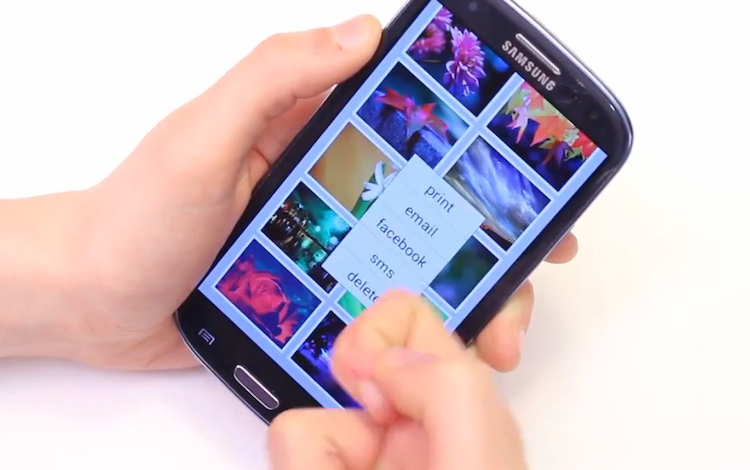
Is the standard digit not adept enough for the way you interact with your smartphone?
The stylus was a popular tool for PDAs and early smartphones due to the resistive touch input technology, which registered touch in relation to wherever pressure was applied to the display. The touch had to physically depress a plastic layer over the display to register a touch. And considering how small the interface elements were, such as the tiny, on-screen keyboards, a stylus was practical and, in some cases, necessary.
Skip forward a few years and everyone started adopting capacitive digitizers, which use an insulator – such as a layer of glass – coated in a conductive material. When the human finger or any other electrical conductor presses the display, there is a measurable change in capacitance. This touchscreen type paired with finger-optimized interface elements all but sent the stylus – or the need for a stylus – back to the dark ages. And some damning words from Steve Jobs didn't help the matter any.
Samsung, HTC and several third-party outlets tried to keep the dream alive, however. Some styli have survived the turbulence, and many have entered the limelight, such as the dry eraser marker-like Cosmonaut stylus or Samsung's very own S Pen.
Standard styli don't necessarily extend the function of your device. They simply replace finger input with a substitute that can certainly make drawing or taking handwritten notes significantly easier. And they won't leave oil streaks across the display to boot.
Samsung, however, opted to make its stylus, the S Pen, inductive rather than your typical capacitive stylus. What this means is the S Pen is capable of much more than your standard stylus. When the S Pen is near the display, capacitive input is switched off so no accidental marks are made by the users hands. Hover the S Pen over content and you can get a preview (i.e.: hover S Pen over an album in Gallery and the user is shown the first nine images of that album).
Samsung also included a button, which greatly extends the usability of the stylus. Pressing the button and long-pressing the stylus on the display will take a screen capture. Pressing the button and double-tapping the display opens a free floating S Note for quickly jotting notes. Holding the button and drawing upwards in a straight line opens Quick Commands, where you can launch practically any application or toggle most settings by drawing a symbol with the S Pen.
Rather than just a stylus, the S Pen is a controller for the Galaxy Note line of devices. And going from using the S Pen to using something without a stylus or, more importantly, the features added by the S Pen is like taking a step backwards in time.
Qeexo aims to fix that with its latest invention, FingerSense. Rather than just registering input, using an acoustic sensor, FingerSense is a technology that greatly extends the capability of the standard capacitive touchscreen. It can determine the difference in what exactly is touching the display. It can distinguish between your fingertip, the pad of your finger, the fingernail, the knuckle and various types of styli.
As shown in the video demonstration, a user goes from using one stylus and drawing a thick line to erasing with another stylus. A third stylus draws with a much finer line. And the user's finger is used to smudge the drawing.
What's so great about this, exactly? Well, for one, it would allow users to get practically the same amount of function the S Pen offers out of nothing more than your index finger and its knuckle. And using various styli, you could get different effects.
The video shows that a double-tap with a knuckle could open a system-wide note taking app, much like Samsung's S Note feature. Using a stylus, I'm sure it would be possible to implement other gestures, such as a double-tap for a screen capture.
Furthermore, the different types of registered inputs could be used for different functions. For example, a regular tap with the finger pad or fingertip could register the typical input. A nail tap could be used as a back or undo function. And the knuckle could double as the right-click function of your computer.
FingerSense gives the age-old finger significantly more functionality.
My problem, however, is that it doesn't appear to be all that natural. While one could eventually teach themselves to tap their smartphone or tablet display with a knuckle or fingernail, it's a very unintuitive adaptation to functions that are already there. Long-pressing, in many cases, doubles as the right-click; a two-finger swipe could register as back, since multitouch is severely underused; and the double-tap function is hardly used at all on mobile platforms, meaning its use cases are still open-ended. Not to mention, several forms of gesture-based input is currently being developed by various firms.
FingerSense is a neat project and Qeexo has a great goal in mind. But, no, I do not want to knuckle-tap my phone. Nor do I want to use my fingernail to navigate back or undo. That said, I would love to see this implemented and used to differentiate between styli, so different styles of styli can be used for different things.
What say you, folks? Does FingerSense and knuckle-tapping seem intuitive or like a neat feature to you? Would you like to see what features FingerSense would unlock on your phone? Or, like me, would you prefer to keep the typical finger input and see FingerSense applied more towards styli?
Image via Vimeo